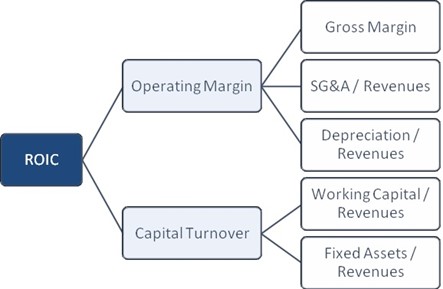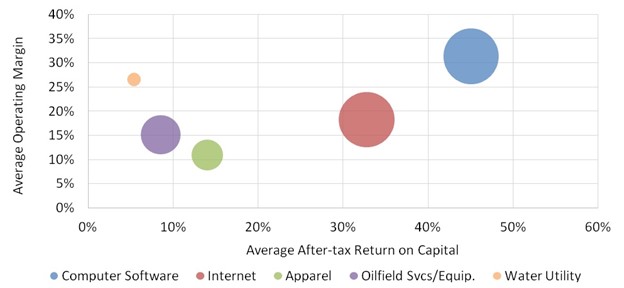What Are Addbacks and How Do They Affect My Company’s Value?
In founder or family-owned businesses, it is common for owners to run personal/non-company related revenue or expenses through the business or to expense certain items that would normally be capitalized. While these practices may come in handy during tax season, they can seriously impact a company’s valuation.
If you are a business owner considering an exit or recapitalization, we strongly recommend that you a) gain an understanding of what add-backs/adjustments are, b) understand how they impact valuation and c) begin the process of identifying and tracking them within your business.
What are addbacks/adjustments?
Addbacks and adjustments come in many forms (typical items and examples are shown below), but generally they can be described as any item on the income statement that is non-core, one-time, or personal in nature. Put simply, addbacks and adjustments are items that should be “added back” to net income and/or zeroed out on the income statement due to one of the previously mentioned reasons. A good rule-of-thumb is to imagine that your business was acquired by a publicly traded corporation or private equity group – any item the acquirer a) would not expect to be part of the business going forward or b) would not include on the income statement is likely an adjustment.
What should I do about addbacks/adjustments?
If you plan to pursue an exit or recapitalization, you should identify any potential addbacks or adjustments to your financial statements and begin tracking them regularly. This can be done however it is easiest/most efficient for you and your team, but we recommend the following:
– Record addbacks on a monthly basis – When looking back quarterly or annually to identify addbacks, it is easy to forget when/where these items appear on the income statement, and you might forget about some items entirely. You reduce the risk of leaving out some items and as a result, leaving additional value on the table, by recording addbacks each month.
– Record the exact dollar amount, and which account it affects – This is particularly true if only a portion of an account is added back. For example, if $20,000 out of a $30,000 “Travel and Entertainment” (T&E) expense was for your family’s vacations, that $20,000 could be added back to EBITDA; however, it may be helpful for buyers to know where that $20,000 was originally recorded. By doing so, they can see that the T&E line was artificially inflated.
– Keep notes explaining why the item is an addback – If you find yourself in a discussion over whether certain addbacks are reasonable, it will be beneficial to keep careful notes on why you chose to add back the expense. For example, if you add back “marketing expenses” of $50,000, a buyer may question this choice since marketing expenses are considered normal business practices. However, if you are able to explain that these expenses were related to a marketing campaign for a trial product that was discontinued (and therefore, will not be incurred again next year), the buyer is more likely to agree with your rationale.
How do addbacks/adjustments affect valuation?
Since companies are often valued based on a multiple of EBITDA, the primary way addbacks and adjustments affect valuation is when they alter EBITDA. If making these alterations to the income statement leads to large fluctuations in EBITDA, the company’s valuation can vary accordingly.
Hypothetically, if you receive an offer for your company based on a multiple of five times trailing twelve months (TTM) EBITDA and your company’s unadjusted EBITDA is $4 million, the buyer has essentially valued your company at $20 million.
Now assume that your company has the following addbacks for the past 12 months:
– Your family’s travel expenses: $20,000
– Donations to a local charity: $5,000
– Salary that you pay your son (who does not work for the business): $75,000
– Fees paid to a law firm you hired during a legal dispute: $100,000
– Implementation/installation fees for a new on premise software system: $20,000
– Renovation to your new office: $30,000
Some of these expenses may seem immaterial on their own, but if combined, they increase your EBITDA by $250,000. At a 5x multiple, this translates to a $1.25 million bump in your total valuation.
Conversely, if your business earned $500,000 of that $4 million in EBITDA from a one-time special project, some buyers might argue that EBITDA should be adjusted down to $3.5 million (therefore reducing total valuation to $17.5 million).
Note: While all of the examples mentioned above may rationally be considered adjustments or addbacks, it is important to keep in mind that once valuation discussions begin, buyers may disagree with certain adjustments or even make adjustments of their own. Addbacks and adjustments are often evaluated on a case by case basis, making it important to carefully track and provide explanations for each item.
Addbacks and Adjustments in Negotiation
When positioning a company for a recapitalization or sale, the seller wants the highest EBITDA or multiplier they can defend. The buyer wants to pay the lowest value possible to mitigate risk and maximize financial returns. When negotiating a deal, both sides will position what should be an addback and/or an adjustment. This is an area where an experienced and reputable M&A advisor can provide tremendous value. An M&A advisor’s experience allows them to not only have the advantage of seeing what are customary and non-customary addbacks and/or adjustments, but also the knowledge and experience to appropriately defend the position of the seller or buyer with data and financial analysis.
Are you considering an exit or recapitalization and have questions about addbacks affecting your company’s valuation? Contact Investment Grade Advisory; we will gladly discuss your concerns and ways you can increase your company’s value.













